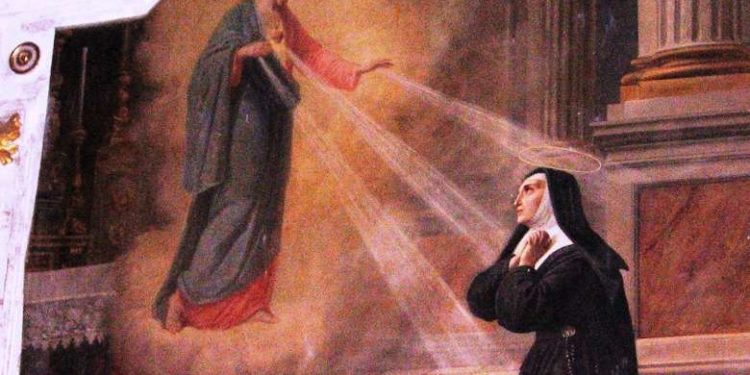For almost all of us who grew up before Vatican II — that is, before the 1960s — the devotion to the Sacred Heart of Jesus was one of the cornerstones of Catholic piety.
The feast of Sacred Heart comes on the Friday that follows the second Sunday after Pentecost, which this year falls on June 11.
If this was in origin a Jesuit devotion, we did not perceive it as such, so completely was it part of church life everywhere.
The origins of this devotion may be traced to the visions of a religious sister, Margaret Mary Alacoque, in the small township of Paray-le-Monial in Burgundy, central France, in the mid-1600s.
Her convent community felt that Sister Margaret Mary was hallucinating, and it was only the intervention of her Jesuit confessor, Claude de la Colombiere, which vindicated these visions as genuine divine revelations.
Ever since, the Society of Jesus, especially in France and Belgium, has played a major role in fostering this devotion and used every means of public communication to do so.
It was before this image that millions of Catholic families consecrated themselves. They renewed their pledges every year and on every major family occasion
Some of these were the act of consecration of individuals and families, the practice of reparation, the litany of the Sacred Heart, the Holy Hour, the nine First Fridays, the League of the Sacred Heart, the Apostleship of Prayer, The Messenger (that staple Catholic magazine of yesteryear), radio programs — all these were part of a rich and complex system of meaning and value which shaped Catholics for generations.
To the man and woman in the pew, what was significant was not Haurietis aquas or some official church document, it was the image of the Sacred Heart, enthroned in the living room above the family altar, suppliant and yet majestic, with the words inscribed below it, “I will bless every home …”
It was before this image that millions of Catholic families consecrated themselves. They renewed their pledges every year and on every major family occasion.
At its core, then, was the individual’s response to the personal love of Jesus, by consecrating oneself to the heart of Christ and by pledging oneself to make up for the sinful behavior in the world (reparation).
For three centuries or more, this Catholic devotion spread itself across every country, every culture, every community.
So, what changed it all, and when did we notice that things had changed?
The watershed years were those of the Second Vatican Council (1962-65) and, simultaneously, the ecumenical movement and the charismatic renewal.
One of the major changes the Vatican Council brought about was the renewal of the liturgy. Another major initiative was to encourage an appreciation of Scripture, until then, sadly, a closed book to most Catholics.
The changes in the Mass and the discovery of the Bible changed Catholic devotional life irrevocably. With this came a new perspective on many traditional devotions, not least the Sacred Heart and novenas to Mary.
Now, wise with hindsight, we can see what happened and why. The charismatic renewal displaced the devotion to the Sacred Heart by emphasizing once again the role of affectivity in prayer and by opening to ordinary people a whole variety of ministries (charisms) in what was until then a largely clerical church.
Much of what was familiar has changed, and many of these changes, still novel and uncomfortable, are still being assimilated
One reason why Sacred Heart devotion was so phenomenally popular was that it offered a vernacular antidote, both practical and affective, to so many Catholics whom the traditional Latin liturgy left untouched.
Its emphasis on personal commitment through a variety of simple tasks had a tremendous popular appeal. And in consecration and reparation, the ordinary lay Catholic could do something in a priest-ridden Church.
The cult of the Sacred Heart encouraged that then. The charismatic renewal implements that now.
Much of what was familiar has changed, and many of these changes, still novel and uncomfortable, are still being assimilated.
Still, the devotion to the Sacred Heart reminds us that there will always be a place to cherish the personal love of God for each one of us in Jesus, and to commit ourselves to this love unconditionally and in generous sacrifice, as once did Claude de la Colombiere and Margaret Mary Alacoque.
Father Myron Pereira SJ is a media consultant based in Mumbai. The views expressed in this article are those of the author and do not necessarily reflect the official editorial position of UCA News.
Credit: Source link




